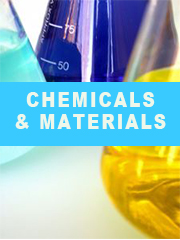Report overview
Commercially Pure Titanium is represented by four distinct grades, specifically grade 1, grade 2, grade 3 and grade 4. Pure titanium ranges from grade 1, which has the highest corrosion resistance, formability and lowest strength, to grade 4, which offers the highest strength and moderate formability. Pure Titanium powders, commonly know as Cp-Ti, are used extensively in the medical field for a wide range of applications, due to the biocompatibility of Titanium with the human body.
This report aims to provide a comprehensive presentation of the global market for Commercially Pure (CP) Titanium Powder, with both quantitative and qualitative analysis, to help readers develop business/growth strategies, assess the market competitive situation, analyze their position in the current marketplace, and make informed business decisions regarding Commercially Pure (CP) Titanium Powder. This report contains market size and forecasts of Commercially Pure (CP) Titanium Powder in global, including the following market information:
Global Commercially Pure (CP) Titanium Powder Market Revenue, 2018-2023, 2024-2029, ($ millions)
Global Commercially Pure (CP) Titanium Powder Market Sales, 2018-2023, 2024-2029, (Tons)
Global top five Commercially Pure (CP) Titanium Powder companies in 2022 (%)
The global Commercially Pure (CP) Titanium Powder market was valued at US$ million in 2022 and is projected to reach US$ million by 2029, at a CAGR of % during the forecast period. The influence of COVID-19 and the Russia-Ukraine War were considered while estimating market sizes.
The U.S. Market is Estimated at $ Million in 2022, While China is Forecast to Reach $ Million.
CP Titanium Grade 1 Segment to Reach $ Million by 2029, with a % CAGR in next six years.
The global key manufacturers of Commercially Pure (CP) Titanium Powder include GE Additive, Kymera International, H?gan?s, ATI, Titomic Metal Powders, Greenearth Chemical, Carpenter Technology, AMETEK Specialty Metal Products and OSAKA Titanium, etc. in 2022, the global top five players have a share approximately % in terms of revenue.
We surveyed the Commercially Pure (CP) Titanium Powder manufacturers, suppliers, distributors and industry experts on this industry, involving the sales, revenue, demand, price change, product type, recent development and plan, industry trends, drivers, challenges, obstacles, and potential risks.
Total Market by Segment:
Global Commercially Pure (CP) Titanium Powder Market, by Type, 2018-2023, 2024-2029 ($ Millions) & (Tons)
Global Commercially Pure (CP) Titanium Powder Market Segment Percentages, by Type, 2022 (%)
CP Titanium Grade 1
CP Titanium Grade 2
CP Titanium Grade 3
CP Titanium Grade 4
Global Commercially Pure (CP) Titanium Powder Market, by Application, 2018-2023, 2024-2029 ($ Millions) & (Tons)
Global Commercially Pure (CP) Titanium Powder Market Segment Percentages, by Application, 2022 (%)
Automotive
Aerospace
Medical
Metallurgical
Other
Global Commercially Pure (CP) Titanium Powder Market, By Region and Country, 2018-2023, 2024-2029 ($ Millions) & (Tons)
Global Commercially Pure (CP) Titanium Powder Market Segment Percentages, By Region and Country, 2022 (%)
North America
US
Canada
Mexico
Europe
Germany
France
U.K.
Italy
Russia
Nordic Countries
Benelux
Rest of Europe
Asia
China
Japan
South Korea
Southeast Asia
India
Rest of Asia
South America
Brazil
Argentina
Rest of South America
Middle East & Africa
Turkey
Israel
Saudi Arabia
UAE
Rest of Middle East & Africa
Competitor Analysis
The report also provides analysis of leading market participants including:
Key companies Commercially Pure (CP) Titanium Powder revenues in global market, 2018-2023 (Estimated), ($ millions)
Key companies Commercially Pure (CP) Titanium Powder revenues share in global market, 2022 (%)
Key companies Commercially Pure (CP) Titanium Powder sales in global market, 2018-2023 (Estimated), (Tons)
Key companies Commercially Pure (CP) Titanium Powder sales share in global market, 2022 (%)
Further, the report presents profiles of competitors in the market, key players include:
GE Additive
Kymera International
H?gan?s
ATI
Titomic Metal Powders
Greenearth Chemical
Carpenter Technology
AMETEK Specialty Metal Products
OSAKA Titanium
Fort Wayne Metals
Outline of Major Chapters:
Chapter 1: Introduces the definition of Commercially Pure (CP) Titanium Powder, market overview.
Chapter 2: Global Commercially Pure (CP) Titanium Powder market size in revenue and volume.
Chapter 3: Detailed analysis of Commercially Pure (CP) Titanium Powder manufacturers competitive landscape, price, sales and revenue market share, latest development plan, merger, and acquisition information, etc.
Chapter 4: Provides the analysis of various market segments by type, covering the market size and development potential of each market segment, to help readers find the blue ocean market in different market segments.
Chapter 5: Provides the analysis of various market segments by application, covering the market size and development potential of each market segment, to help readers find the blue ocean market in different downstream markets.
Chapter 6: Sales of Commercially Pure (CP) Titanium Powder in regional level and country level. It provides a quantitative analysis of the market size and development potential of each region and its main countries and introduces the market development, future development prospects, market space of each country in the world.
Chapter 7: Provides profiles of key players, introducing the basic situation of the main companies in the market in detail, including product sales, revenue, price, gross margin, product introduction, recent development, etc.
Chapter 8: Global Commercially Pure (CP) Titanium Powder capacity by region & country.
Chapter 9: Introduces the market dynamics, latest developments of the market, the driving factors and restrictive factors of the market, the challenges and risks faced by manufacturers in the industry, and the analysis of relevant policies in the industry.
Chapter 10: Analysis of industrial chain, including the upstream and downstream of the industry.
Chapter 11: The main points and conclusions of the report.
